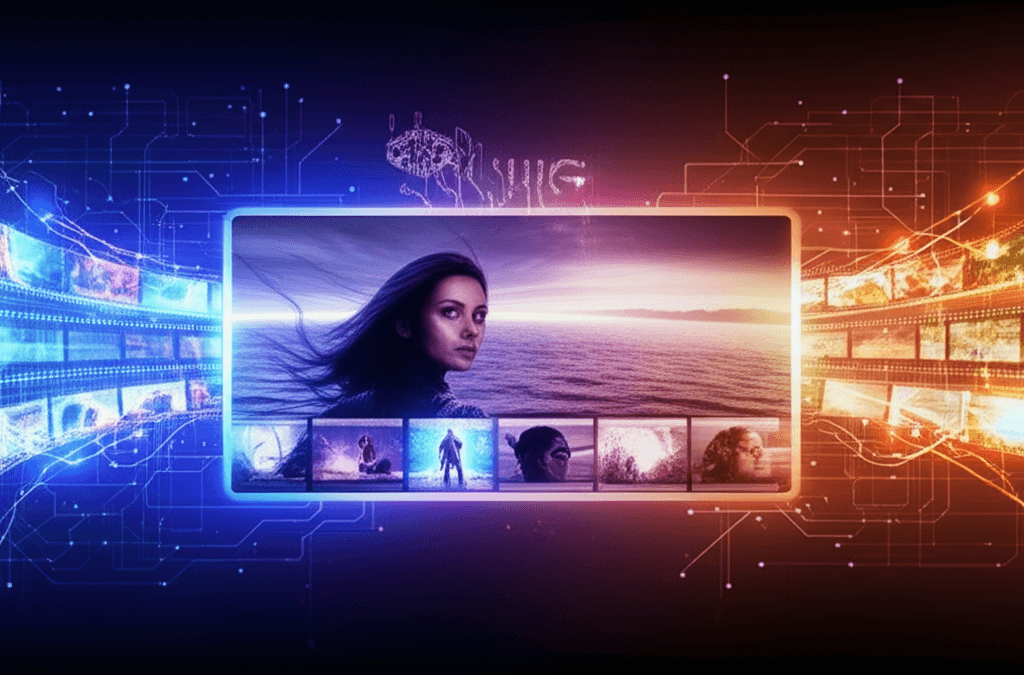ByteDance's Seedance 1.0 Challenges Google's Veo, Igniting AI Video Race
In the AI video race, ByteDance's Seedance challenges Google's Veo, accelerating innovation and shaping content creation's future.
June 12, 2025

The field of artificial intelligence-powered video generation is witnessing an intense acceleration of innovation, with major technology companies unveiling increasingly sophisticated models. ByteDance, the parent company of TikTok, has recently stepped into this burgeoning arena with Seedance 1.0, a model that is already drawing comparisons to established and emerging players, notably Google's Veo series. This introduction signals a new dynamic in a domain previously dominated by a handful of research labs and tech giants, promising to push the boundaries of creative expression and automated content creation. The competition is heating up, with each new model aiming to deliver higher fidelity, better prompt adherence, and more nuanced control over the generated video content.
ByteDance's Seedance 1.0, and specifically its more advanced Seedance 1.0 Pro version, has made a notable entrance, positioning itself as a strong contender in AI video synthesis.[1] Developed by ByteDance's Volcano Engine, Seedance 1.0 Pro is engineered to transform text prompts and images into detailed and emotionally resonant short films.[2] It supports both text-to-video and image-to-video modalities, showcasing capabilities in generating coherent visual narratives that can convey genuine emotion.[2][3] Technical documentation highlights its sophisticated architecture, which includes a "temporally-causal VAE" and a "decoupled spatial/temporal Diffusion Transformer," enabling coherent visual storytelling.[2][4] Seedance 1.0 is noted for its ability to handle multi-shot generation natively, maintaining consistency across scenes, and offering stylistic control for pixel art, anime, and photorealistic content.[2][3][5] The model reportedly excels in rendering realistic physical movement and detailed physics simulations, such as hair, skin, and buoyancy.[2] A significant aspect is its generation speed; Seedance 1.0 can produce a 5-second 1080p video in approximately 41 seconds on an NVIDIA L20 GPU.[2][6][4] ByteDance has indicated plans to integrate Seedance into its ecosystem, including the Doubao app.[2] Some reports suggest Seedance 1.0 has achieved top rankings on leaderboards like Artificial Analysis for both text-to-video and image-to-video tasks.[2][6]
Google, a long-standing leader in AI research, has been actively developing its Veo line of video generation models. The latest iteration mentioned in comparative discussions is Veo 3, which was reportedly released in May 2025.[7] Veo, developed by Google DeepMind, aims to generate high-definition video from text, image, or mixed prompts, emphasizing cinematic quality and nuanced understanding of user instructions.[8][7][9] Veo 3 specifically introduced the capability to generate synchronized audio, including dialogue, sound effects, and ambient noise, to accompany the visuals, a significant step towards more immersive AI-generated content.[7][10] Google has stated that Veo can generate 1080p videos that can be over a minute long and supports various cinematic styles and visual effects like "timelapse" or "aerial shot".[7][9] More recent updates indicate the introduction of Veo 3 Fast, a version designed to produce 720p videos at more than twice the speed of its predecessor, aiming to make AI video generation more accessible and scalable.[11] Veo is being integrated into various Google products, including the Gemini app and a new AI filmmaking tool called Flow, which is custom-designed for Google's advanced models like Veo, Imagen (for image generation), and Gemini.[7][11][12] Google also emphasizes safety, with videos created by Veo being watermarked using SynthID and undergoing safety filter checks.[8][13]
The emergence of Seedance 1.0 has intensified the competitive landscape of AI video generation, directly challenging models like Google's Veo.[2] Reports indicate that Seedance 1.0 Pro is outperforming competitors, including Veo 3, OpenAI's Sora, and Kuaishou's Kling, in areas such as prompt adherence, motion realism, and stylization consistency on certain benchmarks.[2] Seedance 1.0's architecture is designed for both text-to-video and image-to-video tasks within a single system, focusing on multi-shot narrative coherence and precise instruction adherence in complex multi-subject contexts.[6][4] Its claimed speed, generating 5 seconds of 1080p video in about 41 seconds, presents a compelling efficiency argument.[6] Google's Veo 3, on the other hand, has highlighted its unique strength in integrated audio generation, a feature that addresses a significant aspect of complete video production.[7][10] Veo 3 also supports 4K resolution in some instances and has an improved understanding of physics, according to Google.[7] The "trading blows" narrative emerges from these differing strengths: Seedance 1.0 appears to push hard on visual fidelity, multi-shot consistency from a single prompt, and generation speed for silent video, while Veo 3 is making strides in longer video generation and the crucial integration of synchronized audio.[2][7] Both companies are leveraging their models through various platforms, with ByteDance aiming for integration into apps like Doubao and Google making Veo accessible via the Gemini API, Google AI Studio, and the Flow tool.[2][8][14][12] The cost is also a factor, with Seedance 1.0 Pro pricing mentioned at approximately $0.50 for a 5-second 1080p video.[1]
The advancements showcased by ByteDance's Seedance 1.0 and Google's Veo series carry significant implications for the broader AI industry and content creation. The rapid improvement in the quality, controllability, and speed of AI video generation is democratizing video production, potentially enabling individual creators and smaller businesses to produce high-quality video content that was previously resource-intensive.[15][16][17] This could lead to a surge in personalized marketing content, dynamic educational materials, and novel forms of entertainment.[16][17] However, the rise of highly realistic AI-generated video also amplifies concerns regarding misinformation, copyright infringement, and the impact on creative professions.[18] The competition between major tech companies like ByteDance and Google is likely to fuel even faster innovation cycles, pushing the boundaries of what AI can achieve in understanding and recreating the visual world. As these models become more accessible, the ethical considerations and the need for robust detection and watermarking technologies, like Google's SynthID, become increasingly critical to ensure responsible development and deployment.[8][13] The industry is moving towards models that not only generate visually impressive sequences but also understand narrative structure, emotional expression, and the complex physics of the real world, heralding a new era for digital media.
Sources
[1]
[2]
[4]
[5]
[8]
[9]
[10]
[11]
[12]
[13]
[14]
[15]
[16]
[17]
[18]